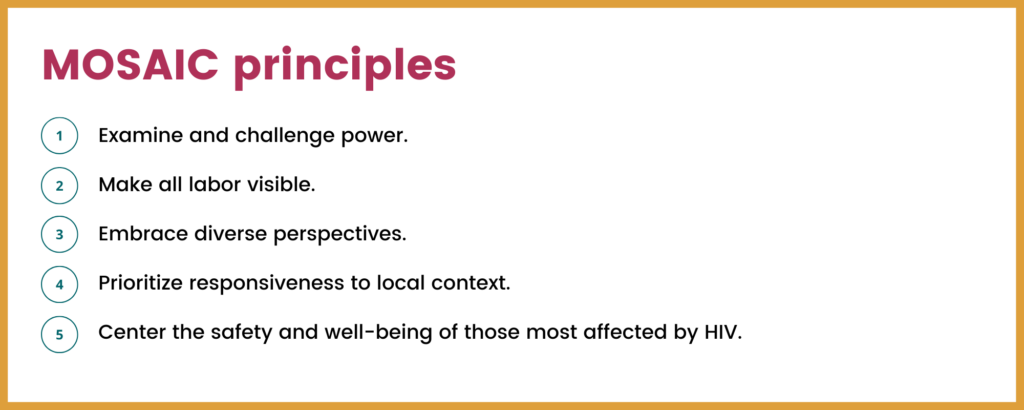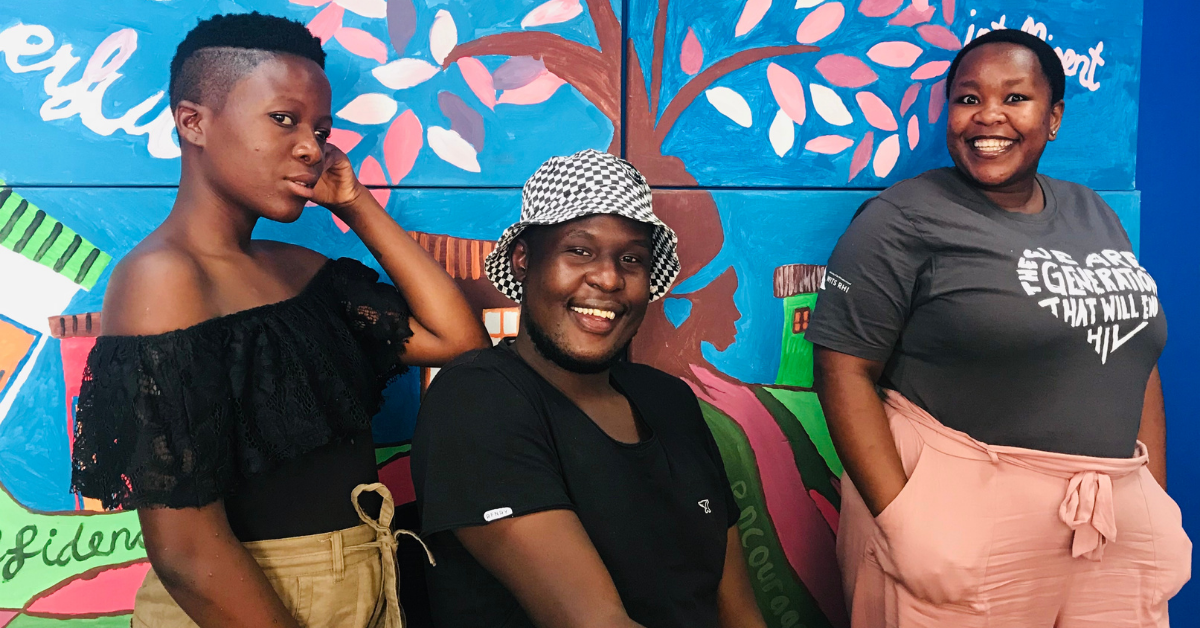Robyn Dayton, FHI 360
Chantel Manganye, Wits RHI
Celimpilo Nkambule, Wits RHI
Amogelang “Sasha” Kekana, Wits RHI
Elmari Briedenhann, Wits RHI
Nkunda Vundamina, Wits RHI
This post is part of a five-part series about the strategic priorities of the Maximizing Options to Advance Informed Choice for HIV Prevention (MOSAIC) project.
In the MOSAIC project, the end user—that is, the people who need and/or want to use biomedical HIV prevention (PrEP) products—is at the center of all that we do. One of our five strategic priorities is the implementation of a user-centered approach that cuts across the entire project. We’re also putting end users’ perspectives front and center here: In this blog, three youth advocates — Chantel, Celi, and Sasha —from the Wits Reproductive Health and HIV Institute (Wits RHI) give their take on implementing a user-centered approach.
Youth perspectives on a user-centered approach
As young advocates partnering with MOSAIC, our hope for this project is to see a generation of young people leading the way and fearlessly tearing down inequalities to create societies that redefine and normalize HIV prevention. The successful implementation of MOSAIC will depend on the continuous and consistent engagement of end-users, who need to be empowered to hold the project accountable. What success looks like to us is a young woman walking into any facility of her choice without fear of judgment or stigma, speaking to a health care provider who is not overburdened with work and rushing to see the next client, and receiving focused attention that meets her unique needs and circumstances. As youth advocates inside MOSAIC, we will strive to meet end users where they are, remain responsive to their needs, and be accountable and transparent in fulfilling our promise of better access to more stigma-free options that empower users to meet their own HIV prevention needs.

What is a user-centered approach?
It’s all about meeting people where they are (which is exactly where they’ll be using prevention products). It’s about understanding, meaningfully engaging, and being responsive and accountable to those for whom PrEP products have so much promise. In MOSAIC, we consider end users to include a wide range of groups, including those who have been underrepresented in the past, but we have a special emphasis on cisgender AGYW that takes into account the size of this population and the barriers they face to PrEP use.
Each group and each individual interacting with MOSAIC will have unique needs. Our user-centered approach will provide principles and processes that shape the whole project so that understanding and respecting those needs is always a priority.

Why does a user-centered approach matter and how will it show up in the project’s day-to-day activities?
End users have many characteristics that will be taken into account — age, gender, sexual orientation, rural/urban, education, socioeconomic status — but we know that PrEP programs that address gender- and age-related barriers are more successful programs. Therefore, we’ll underpin our end-user focused efforts with two approaches: gender integration and meaningful youth engagement.
Gender integration
If we acknowledge and respond to the gender-related issues that create barriers to PrEP — gender inequalities between men and women (e.g., power differentials between partners); marginalization and stigmatization of those not conforming to rigid gender norms (including young women having sex); and gender-based violence (GBV) against cisgender women, transgender women, and nonbinary people — we can increase access to PrEP products. These issues can be successfully addressed only when we name them and meaningfully engage populations who have lived experience with each, making sure that we collectively put forward solutions that can work in the real world.
Meaningful youth engagement
In the same way that we have to be systematic and intentional in countering the impacts of harmful gender norms, we also have to deal with the fact that young people have been sidelined and denied the opportunity to be the architects of their own futures. Based on intersecting stigmas, this is especially true for AGYW, who deal with the double burden of being young and female. Meaningful youth engagement means MOSAIC will take into account where young people are developmentally, emotionally, educationally, economically, and as members of their families and communities (just to name a few characteristics).
It also means that MOSAIC commits to “nothing about us, without us” as the only ethical and effective way to move toward epidemic control. Or, as Celi put it, “It means that we no longer have to bring folding chairs to the decision-making table.” We’re excited to do this within MOSAIC by creating structures, such as the Youth Advisory and Accountability Committee, that are composed of young people and provide them with platforms and support to amplify their voices and to hold the project accountable for meeting their needs.
We acknowledge that supporting AGYW doesn’t mean working only with AGYW. MOSAIC will work to create spaces where youth have stigma-free, youth-friendly services, accurate and accessible information, multiple products, peer support, and complementary activities — such as parent and male partner engagement — that acknowledge the roles others may play in AGYW’s decision-making and product use.
Final word
There isn’t a better way to end this blog than with the reflections on MOSAIC of our young coauthors:
Knowing that there is a project that really wants to know us and really cares about what we want, makes us feel “superb” (Chantel, age 20), “empowered” (Sasha, age 26), and “enthusiastic” (Celi, age 26).
CHANTEL, SASHA, AND CELI
Featured Image: Chantel, Sasha, and Celi strike a pose at the Wits RHI office in Johannesburg, South Africa (Nakita Sheobalak/Wits RHI).


